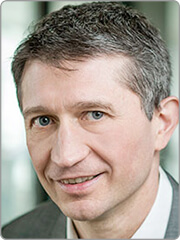|
ATTENTION : Service interruption on Monday 11 July from 12:30 to 13:00
all the CCSD's websites (Sciencesconf, HAL, Episciences, AureHAL) will be inaccessible (network hardware connection). |
|
|
The sensing enterprise improved by Model-Based Cyber-Physical-Systems Engineering (MBCPSE) The Easy-Dim GT (http://www.easy-dim.org) of the CNRS GdR MACS organizes every year a scientific workshop of one day. For the 2018 edition, this workshop will focus on sensing enterprise in collaboration with the French Association of System Engineering (AFIS). The sensing enterprise is a digital business innovation concept concerning the adoption of Future Internet technologies for the virtual enterprise and its value network. Translating the same concept to the Smart Systems in general (smart manufacturing, smart cities, smart logistics ...), the capability by next generation systems sensing, modelling and interpreting the signals from the real world is a pre-requisite for a more flexible and agile reconfiguration of those smart systems. A sensing system needs resources and apparatuses to be constantly under control, to be configured and to be able easily to interact with human workers. All these functions, and much more indeed, are now implemented by so-called Cyber-Physical Systems (CPS). Those systems enable the physical world to merge with the virtual one. Using sensors, the embedded systems monitor data from physical processes, make those data globally available and make possible, for software applications, to directly interact with events in the physical world. With these new reconfigurable smart systems what types of approaches are needed to integrate human into system engineering (FH in design) and the human into sociotechnical systems (FH in use)? With advent of the new paradigms of Industrial Internet-of-Things and Cyber-Physical Systems, the number and the diversity of systems that need to work together in the future enterprises have significantly increased. What kind of methodology is needed to verify and validate the usage and to promote the acceptance? A possible path could be the evolution from model-based engineering (MBSE) to Model-Based Cyber-Physical-Systems Engineering (MBCPSE). This trend highlights the need to shift the interoperability paradigm from the classic consideration of interoperating pair of systems, towards the interoperability as a capability to sense and perceive the exchanged messages. Such a shift could have important consequences on the future architecture design of these systems, it could rely on research, to measure the performance of acceptance, simplicity and learner systems. The emergence of cloud-based technologies will have a significant impact on the design and implementation of those kind of sensing capabilities systems; using such novel technologies, collaborative engineering practices will increase globally which will enable a new generation of small-scale industrial organizations to function in an information centric manner. A research issue could be to design the new architectures of products - services - users to evolve towards good management practices of the interfaces. The potential of such technologies in fostering a leaner and more agile approach towards the system engineering is also very high. Engineers and engineering organizations no longer have to be restricted to the availability of advanced processing capabilities. They will need to learn to grasp, understand, model the usage, in collaboration with systems/users to characterize performance. Those activities should consider the system safety and resilience through the use of the formalized explicit and embedded knowledge. This new capability could conduct towards a system engineering approach allowing the customization of uses according to the different user profiles. This inclusive approach could revolutionize the company and the industry of the future.
The topics of interest include, but are not limited to: • Smart Systems Interoperability • Human Systems in Model-Based System Engineering (MBSE) • Cyber Physical Systems modelling and applications • Cyber Physical Production Systems • Cyber Manufacturing Systems • Cyber Logistics Systems, • Cyber Enterprise Systems • CPS for Control in Smart Cities Systems/Transportation/Energy/Water • Model-driven sensing engineering • Ontology-based models for CPS/IIOT • CPS for Future Internet Enterprise Systems A system engineering approach allowing the customization of uses according to the different user profiles • The revolution of the company and the industry of the future ---------------------------------------------------------- Key note speech of the day Antoine Lonjon, Mega International Chief Methodology Officer. Key note speech title: Agile at scale: architecture and product-centricity.
Antoine Lonjon is Chief Innovation Officer at MEGA International. He has contributed to the foundation of the HOPEX enterprise architecture toolset and is also involved in standard organizations, such as the OMG, the Open Group or NATO. Antoine also experience in enterprise architecture consulting in the banking and manufacturing industries. Key note speech title: Agile at scale: architecture and product-centricity. There is no doubt that the agile trend is having a profound effect on software development practices, as well as on the organization of IT departments and beyond; Antoine will discuss how the EA discipline itself is being deeply challenged by the agile manifesto, and how it requires a shift of focus from production-dominant design to service-dominant design, towards an organization of purposes.
|



